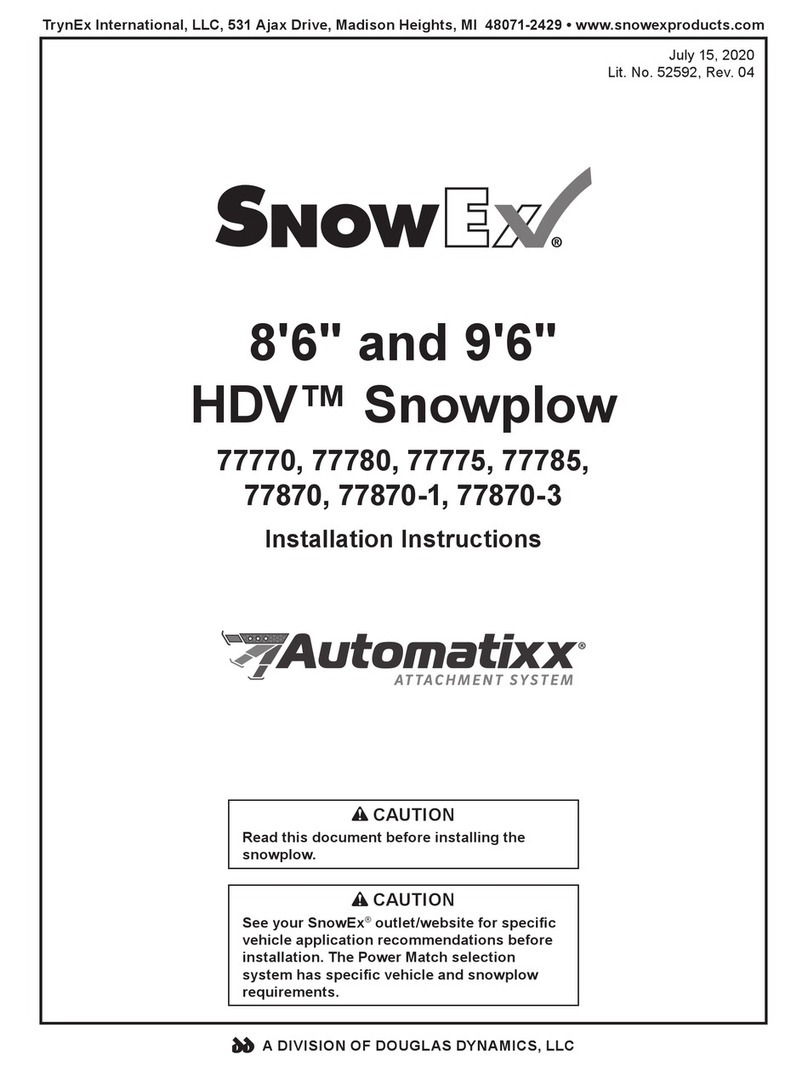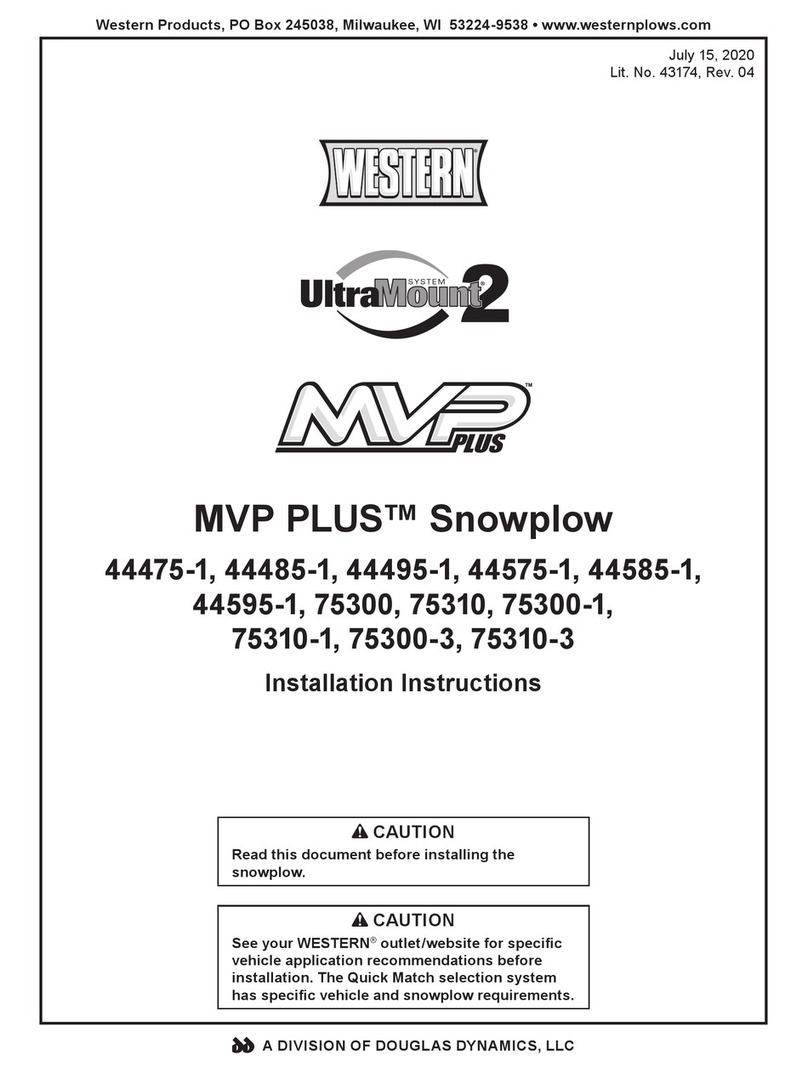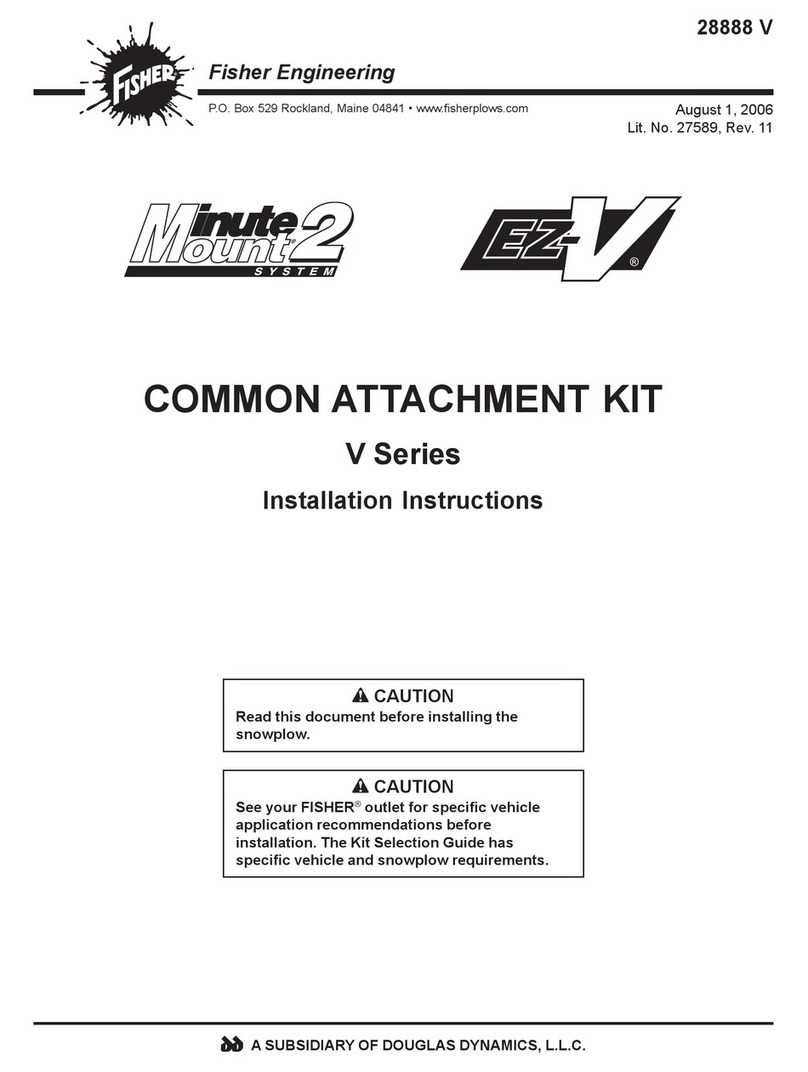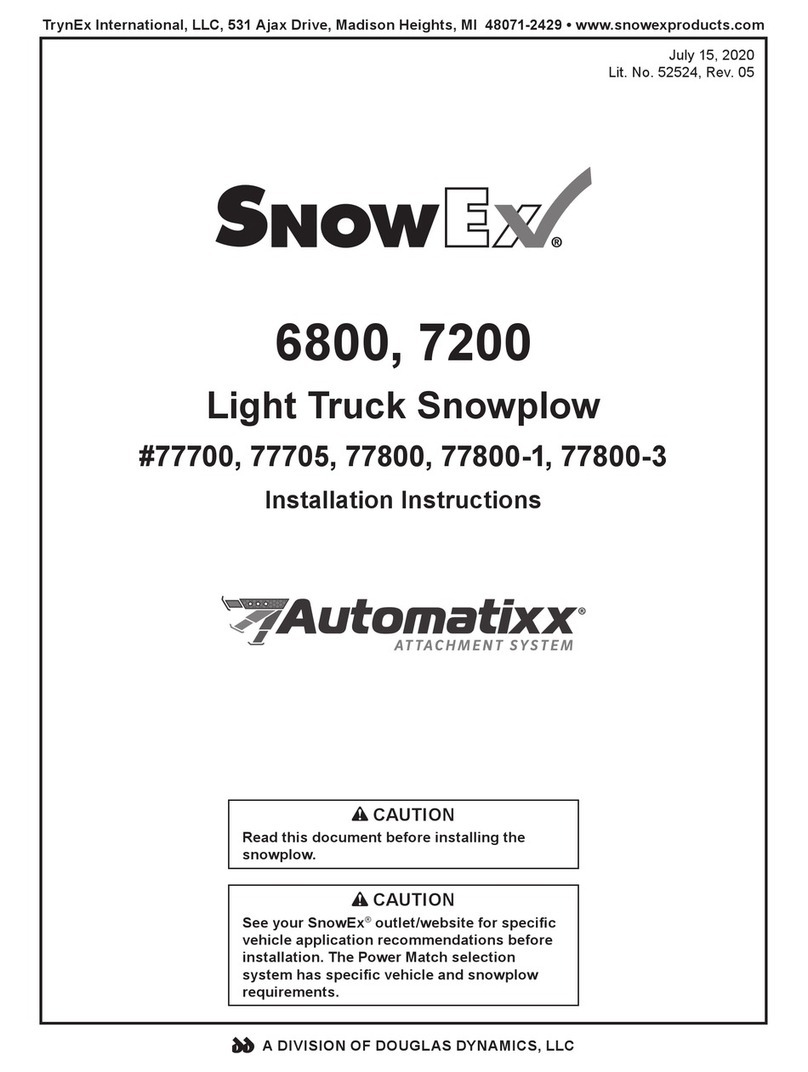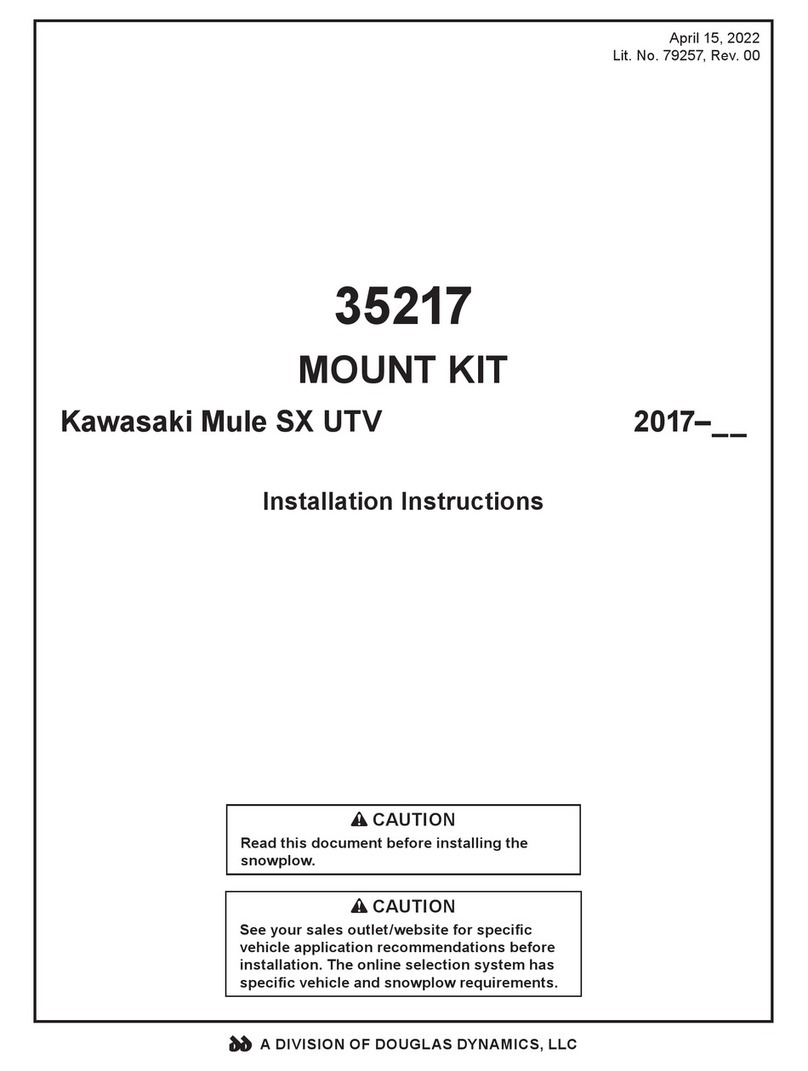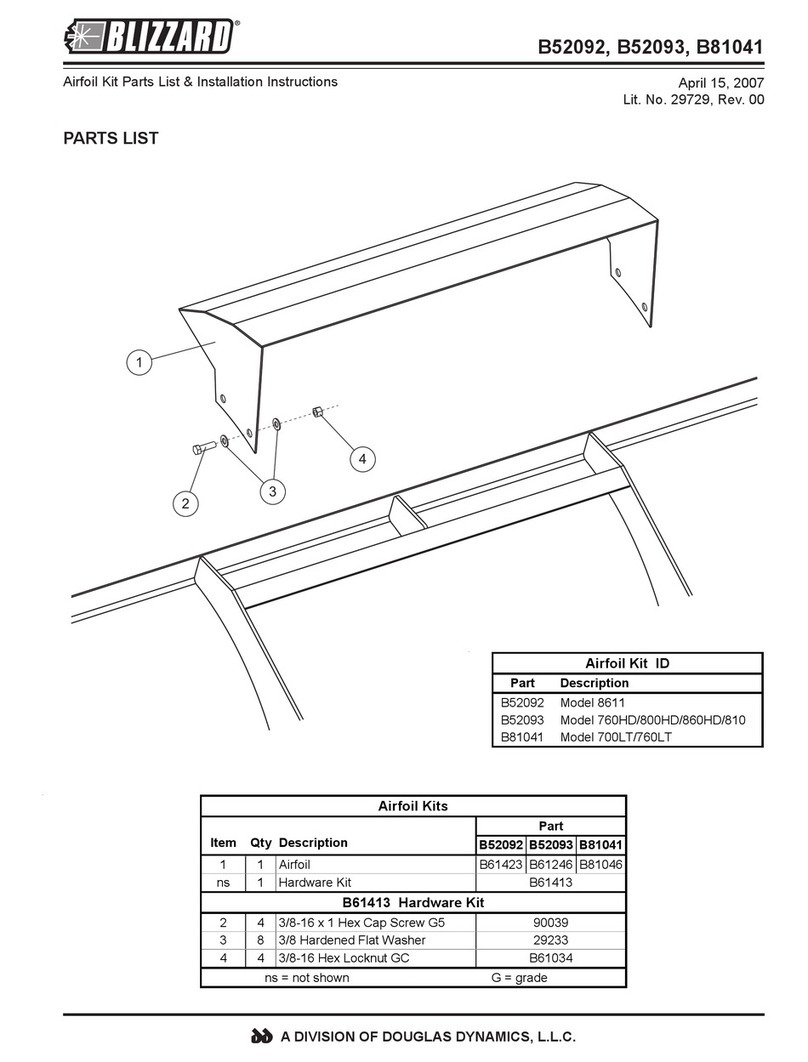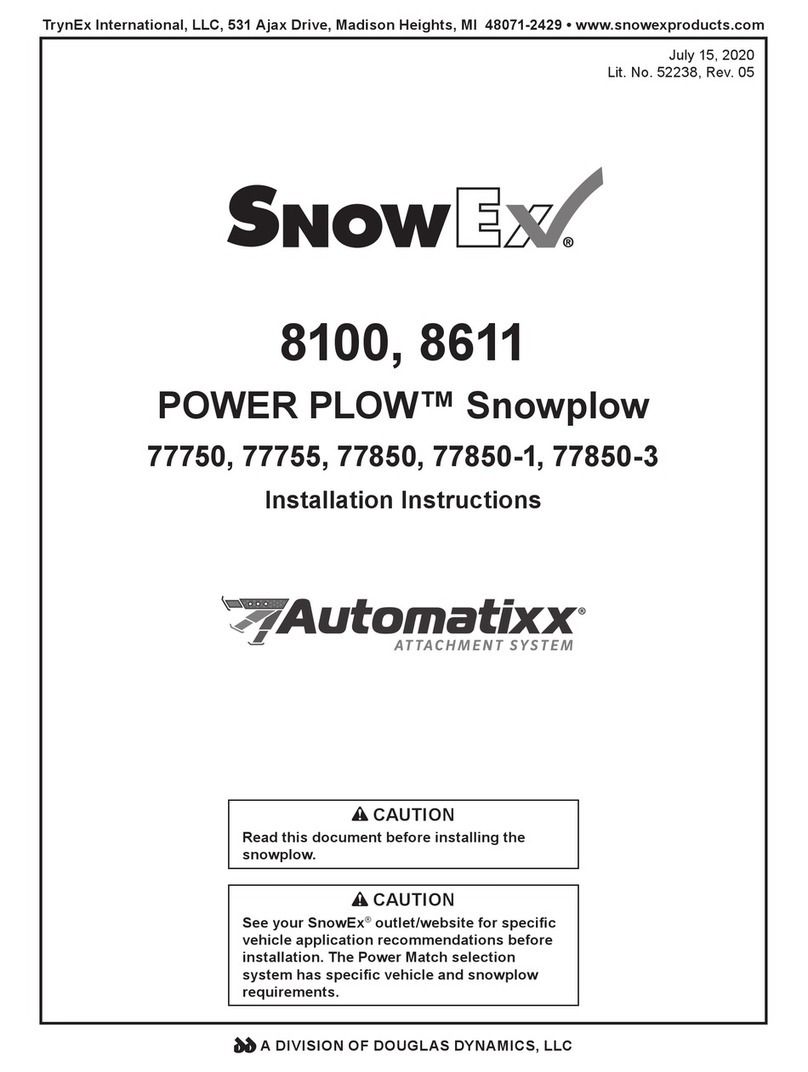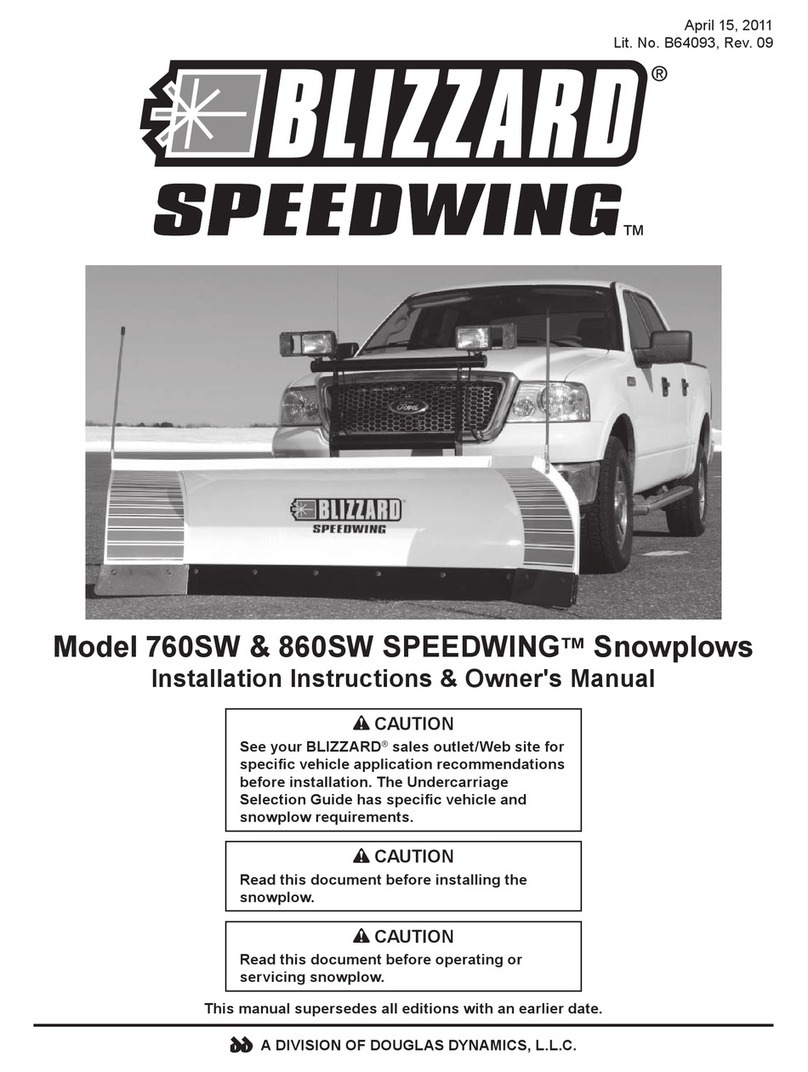
Lit. No. 50579, Rev. 02 3 April 15, 2010
50600, 50810
HYDRAULIC SAFETY
• Always inspect hydraulic components and hoses
before using. Replace any damaged or worn parts
immediately.
• If you suspect a hose leak, DO NOT use your
hand to locate it. Use a piece of cardboard or
wood.
FUSES
The FISHER®electrical and hydraulic systems contain
several blade-style automotive fuses. If a problem
should occur and fuse replacement is necessary,
the replacement fuse must be of the same type and
amperage rating as the original. Installing a fuse with
a higher rating can damage the system and could start
a fire. Fuse Replacement, including fuse ratings and
locations, is located in the Maintenance Section of the
Owner's Manual.
PERSONAL SAFETY
• Remove ignition key and put the vehicle in park or
in gear to prevent others from starting the vehicle
during installation or service.
• Wear only snug-fitting clothing while working on
your vehicle or snowplow.
• Do not wear jewelry or a necktie, and secure long
hair.
• Wear safety goggles to protect your eyes from
battery acid, gasoline, dirt and dust.
• Avoid touching hot surfaces such as the engine,
radiator, hoses and exhaust pipes.
• Always have a fire extinguisher rated BC handy,
for flammable liquids and electrical fires.
WARNING
Hydraulic fluid under pressure can cause skin
injection injury. If you are injured by hydraulic
fluid, get medical attention immediately.
SAFETY PRECAUTIONS
Improper installation and operation could cause
personal injury and/or equipment and property damage.
Read and understand labels and the Owner's Manual
before installing, operating or making adjustments.
WARNING
Lower blade when vehicle is parked.
Temperature changes could change
hydraulic pressure, causing the blade to
drop unexpectedly or damaging hydraulic
components. Failure to do this could result in
serious personal injury.
WARNING
Remove blade assembly before placing
vehicle on hoist.
WARNING
The driver shall keep bystanders clear of the
blade when it is being raised, lowered or angled.
Do not stand between the vehicle and the blade
or within 8 feet of a moving blade. A moving or
falling blade could cause personal injury.
WARNING
Do not exceed GVWR or GAWR including
blade and ballast. The rating label is found on
driver-side vehicle door cornerpost.
WARNING
To prevent accidental movement of the blade,
always turn the control OFF whenever the
snowplow is not in use. The power indicator
light will turn OFF.
WARNING
Keep hands and feet clear of the blade and
A-frame when mounting or removing the
snowplow. Moving or falling assemblies could
cause personal injury.
CAUTION
Refer to the current Kit Selection Guide for
minimum vehicle recommendations and
ballast requirements.
CAUTION
Assembling a hose to the incorrect wing ram
port can result in permanent damage to the
ram.
